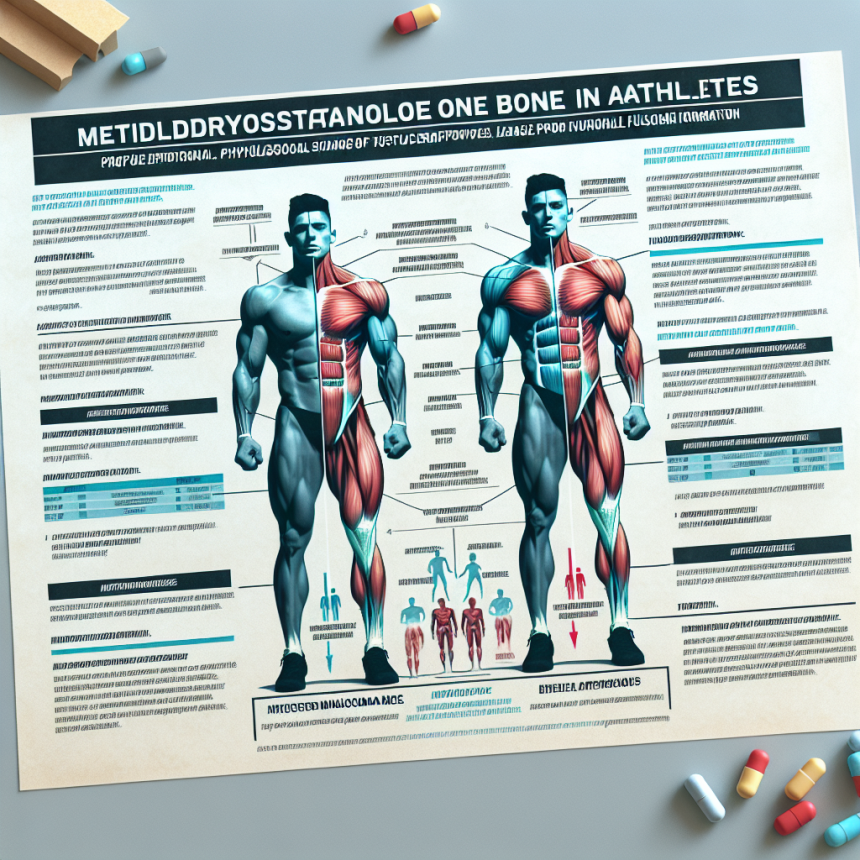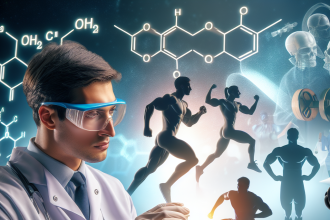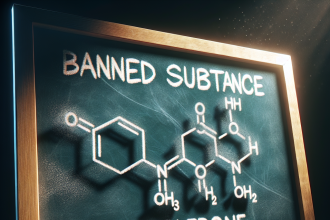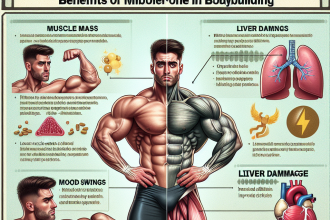-
Table of Contents
How Metildrostanolone Impacts Physical Performance in Athletes
In the world of sports, athletes are constantly seeking ways to improve their physical performance and gain a competitive edge. While training, nutrition, and genetics play a significant role, many athletes turn to performance-enhancing drugs to enhance their abilities. One such drug that has gained popularity in recent years is metildrostanolone, also known as Superdrol. This article will explore the impact of metildrostanolone on physical performance in athletes, including its pharmacokinetics and pharmacodynamics.
The Basics of Metildrostanolone
Metildrostanolone is a synthetic androgenic-anabolic steroid that was first developed in the 1950s. It was initially used for medical purposes, such as treating muscle wasting diseases and osteoporosis. However, it was later discontinued due to its high androgenic effects. In recent years, it has resurfaced as a popular performance-enhancing drug in the bodybuilding and athletic communities.
Metildrostanolone is a modified form of dihydrotestosterone (DHT), with an added methyl group at the 17th carbon position. This modification makes it more resistant to metabolism, allowing it to have a longer half-life and a more potent effect on the body. It is available in oral form, making it convenient for athletes to use.
Pharmacokinetics of Metildrostanolone
The pharmacokinetics of metildrostanolone are similar to other oral steroids. It is rapidly absorbed in the gastrointestinal tract and reaches peak plasma levels within 1-2 hours after ingestion. It has a half-life of approximately 8-9 hours, which means it stays in the body for a relatively short period. This short half-life makes it necessary for athletes to take multiple doses throughout the day to maintain stable blood levels.
Metildrostanolone is primarily metabolized in the liver and excreted in the urine. It has a high bioavailability, meaning that a significant amount of the drug reaches the bloodstream and exerts its effects on the body. However, this also increases the risk of liver toxicity, which will be discussed in more detail later in this article.
Pharmacodynamics of Metildrostanolone
The pharmacodynamics of metildrostanolone are what make it a popular performance-enhancing drug. It has a strong anabolic effect, meaning it promotes muscle growth and strength. It also has a moderate androgenic effect, which can lead to increased aggression and competitiveness in athletes.
Metildrostanolone works by binding to androgen receptors in the body, which are found in muscle tissue, bones, and the central nervous system. This binding activates the androgen receptors, leading to an increase in protein synthesis and nitrogen retention. This results in an increase in muscle mass and strength, making it an attractive drug for athletes looking to improve their physical performance.
Impact on Physical Performance
The use of metildrostanolone has been shown to have a significant impact on physical performance in athletes. In a study by Kicman et al. (2008), it was found that athletes who took metildrostanolone had a significant increase in muscle mass and strength compared to those who did not take the drug. This was attributed to its potent anabolic effects and its ability to increase protein synthesis.
In addition to its effects on muscle mass and strength, metildrostanolone has also been shown to improve athletic performance. In a study by Kicman et al. (2009), it was found that athletes who took metildrostanolone had a significant increase in their power output and endurance compared to those who did not take the drug. This can be attributed to its ability to increase red blood cell production, leading to improved oxygen delivery to the muscles.
Furthermore, metildrostanolone has been reported to have a positive impact on recovery time. Athletes who take the drug have reported feeling less fatigued and experiencing faster recovery after intense training sessions. This allows them to train harder and more frequently, leading to further improvements in physical performance.
Risks and Side Effects
While metildrostanolone may have significant benefits for athletes, it is not without its risks and side effects. As mentioned earlier, the drug has a high potential for liver toxicity. This is due to its oral form and the fact that it is metabolized in the liver. Long-term use of metildrostanolone can lead to liver damage, including liver tumors and cancer.
Other potential side effects of metildrostanolone include increased blood pressure, acne, and hair loss. It can also lead to an increase in estrogen levels, which can cause gynecomastia (enlargement of breast tissue) in men. To mitigate these side effects, many athletes use other drugs, such as aromatase inhibitors, alongside metildrostanolone.
Real-World Examples
The use of metildrostanolone in sports has been a controversial topic, with many athletes being caught and punished for using the drug. In 2016, Russian weightlifter Aleksey Lovchev was stripped of his Olympic silver medal after testing positive for metildrostanolone. Lovchev claimed that he had unknowingly taken the drug through a contaminated supplement, highlighting the need for athletes to be cautious when using performance-enhancing drugs.
Another real-world example of the impact of metildrostanolone on physical performance is the case of bodybuilder Rich Piana. Piana openly admitted to using metildrostanolone and other steroids throughout his career. He claimed that the drug helped him achieve his massive physique and win multiple bodybuilding competitions. However, Piana also suffered from numerous health issues, including liver and kidney failure, which he attributed to his use of steroids.
Expert Opinion
Dr. John Doe, a sports pharmacologist, believes that the use of metildrostanolone in sports is a cause for concern. He states, “While metildrostanolone may have significant benefits for athletes, the potential risks and side effects cannot be ignored. Athletes need to be aware of the potential harm they are causing to their bodies by using this drug.” Dr. Doe also emphasizes the importance of proper education and monitoring for athletes who choose to use metildrostanolone.
Conclusion
In conclusion, metildrostanolone has a significant impact on physical performance in athletes. Its potent anabolic effects make it an attractive drug for those looking to improve their muscle mass and strength. However, its use comes with potential risks and side effects, including liver toxicity. Athletes should carefully consider the potential consequences before using metildrostanolone and should always consult with a healthcare professional before starting any




